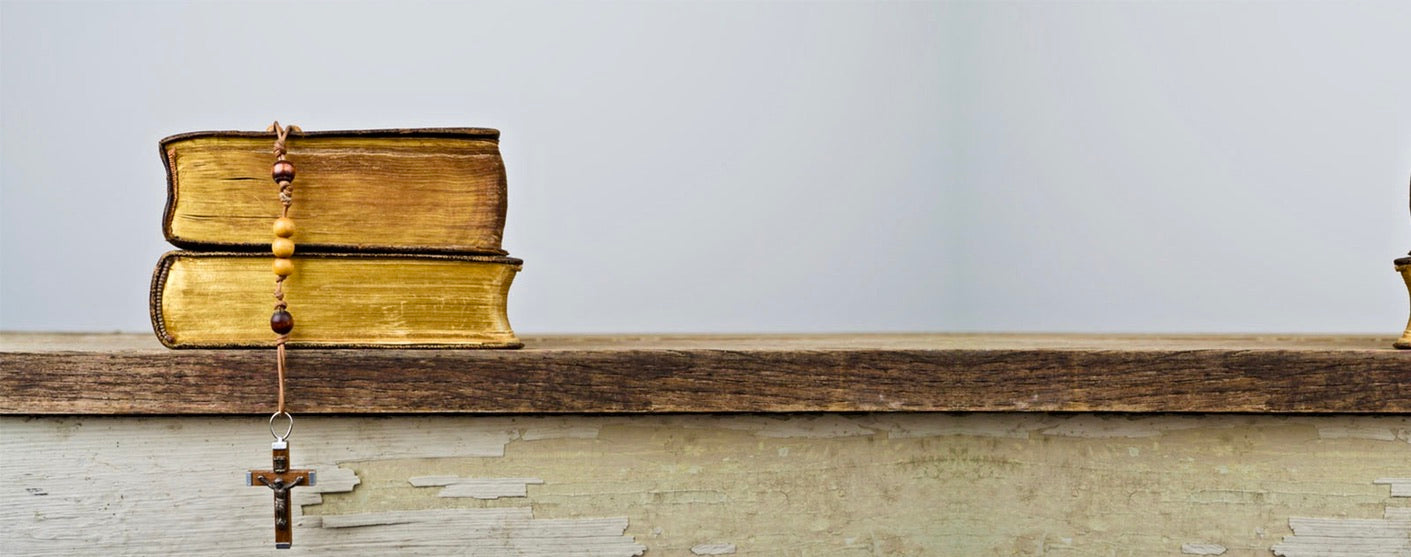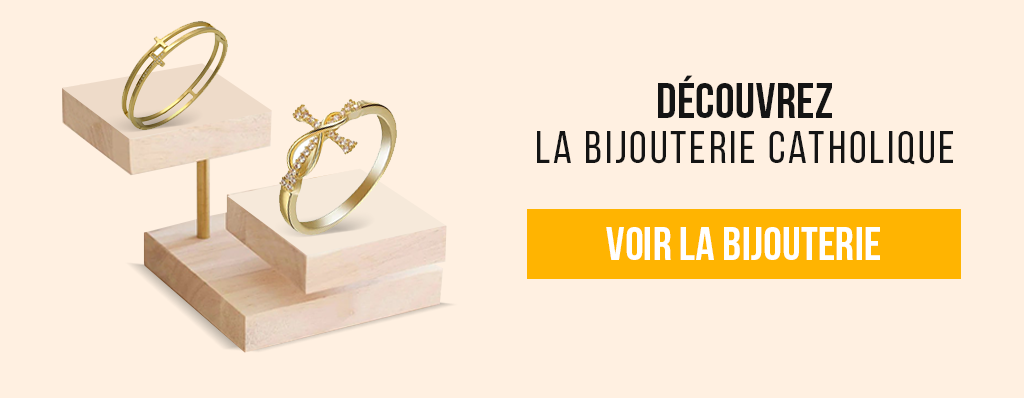

Written by Benoît Santos - Updated on Mar 31, 2025
The Catholic Church is one of the most popular churches in the world. Do you want to know the history of this church?
To satisfy your curiosity, we have done some careful research on the Catholic Church. Here is what we can say in a few words:
The Catholic Church is considered the largest and best-organized religious denomination. It is present in several countries and is led by the Pope. The Pope lives in the Vatican and is replaced in the event of death or serious illness.
In this article, you will discover:
-
The origin of the Catholic Church;
-
The characteristics of the Catholic Church;
-
The Christianization of pagan beliefs.
Before you continue reading, here are several articles on the Catholic religion that might interest you:
- 7 Essential Points for Christian Prayer
- The difference between the Catholic and Protestant religions
- The Schism 1054 : causes of the separation between East and West
- The difference between the Catholic and Orthodox religions
Without further ado, let's start the article right now!
Definition and origin of the Catholic Church

The Catholic Church, or Catholicism, has referred to the "universal Church" since the early second century. In 313, Constantine the Great established Christianity as a lawful religion in the Roman Empire. The term was first used in the letters of Ignatius of Antioch, who, according to John Chrysostom, was ordained by Peter himself.
In fact, the Spanish word "Catholicism" comes from the Latin " catholicismus " and the Greek "katholikós", which means "universal". However, after the Protestant Reformation, the attribute Catholic (or Catholicism) was mainly used to distinguish the Church of Rome from other Christian denominations, such as Protestants, Orthodox, etc.
Today, the Catholic Church is the largest and most organized Christian denomination , with over a billion followers. It proclaims that it is the church for which Jesus died. It is the church that was established and built by the apostles. Discover its history and dogmas in this article.
History of the Catholic Church

For the first 280 years of Christian history , Christianity was outlawed by the Roman Empire, and Christians were terribly persecuted. All this changed after the "conversion" of the Roman Emperor Constantine the Great. Constantine the Great "legalized" Christianity with the Edict of Milan in 313 AD. Then, in 325 AD, he convened the Council of Nicaea in an attempt to unify Christianity. The emperor saw Christianity as a religion capable of uniting the Roman Empire, which was beginning to divide at that time.
While this may have seemed like a positive change for the Christian church , the results were anything but satisfactory. Constantine refused to fully embrace the Christian faith, and he retained many of his pagan beliefs and practices. The Christian church that Constantine promoted was a mixture of authentic Christianity and Roman paganism.
Constantine finally realized that because the Roman Empire was so vast, large, and diverse, not everyone would be willing to abandon their religious beliefs and embrace Christianity instead. This is why Constantine allowed, and even encouraged, the "Christianization" of pagan beliefs . Thus, completely pagan and completely unwritten beliefs were given new "Christian" identities.
If you would like to know more about the history of the Catholic religion, we invite you to discover our blog article dedicated to the Catholic religion:
LEARN MORE ABOUT THE HISTORY OF THE CATHOLIC RELIGION >>

Characteristics of the Catholic Church
The Catholic Church recognizes the existence of the Holy Trinity : recognizing the origin of the Holy Spirit, not only from God the Father, but also from God the Son. Its other dogmatic characteristics are: the existence of purgatory and the recognition of dogmas on the direction of the Pope.

The differences in worship and canonical principles between Catholicism and the Orthodox Church are: clergy celibacy and the unique development of the cult of the Virgin. The Vatican is the world center of the Catholic Church. It is here that the Pope lives, along with his collaborators responsible for various church functions.
The Catholic Church must reconcile its structure, founded on tradition and the centrality of the pope, with modern religious pluralism. Pope Francis is the 264th pope of the Church since St. Peter.
The sacraments of the Catholic Church.
According to the tradition of the Catholic Church, the sacraments mark the major stages of Christian worship from infancy to death. Roman Catholics and Eastern Orthodox believers, as well as many Protestant bishops, receive all seven sacraments.

A sacrament, said St. Augustine, is "the visible form of an invisible grace." By the word "grace," St. Augustine perceived God's expansive compassion, and by "visible form."
Baptism.
Baptism has always been considered the sacrament of initiation in the Christian church. It represents an individual's act of faith and marks them as a disciple of Christ, while washing away original sin (derived from Adam's sin). It is recognized by all churches that accept the sacraments.

According to the conclusions of the episcopal baptismal service, the person baptized with water and the Holy Spirit is received into the holy church of Christ . He has become an active member, so that he can receive the forgiveness of sins, through spiritual regeneration. Sometimes the baptized person is sprinkled with a few drops of water, other times water is poured on him, and sometimes he is completely immersed.
Although most churches baptize children at birth , Baptists and other denominations wait until adolescence or adulthood. Water and the sign of the cross are used in all forms of baptism. And all have a profound spiritual effect on the baptized.
Confirmation.
Confirmation completes the work of baptism and allows the person (usually between the ages of 7 and 14) to assume greater spiritual responsibilities. In both the Catholic and Episcopal Churches, the bishop is usually the one who confirms. Because the origin of confirmation is considered to come from the apostles and not from divine authority, Protestants do not recognize confirmation as a sacrament.

On the other hand, it is recognized as a "minor" sacrament by Episcopalians. Lutherans, on the other hand, practice it as a rite that reminds children of the promise of baptism and prepares them for communion , and not as a sacrament.
The Eucharist.
The Eucharist is the celebration of the Last Supper, the turning point in Jesus' life. It is the greatest of the sacraments, around which all others revolve. It commemorates his sacrifice for humanity. All the biblical accounts of the Last Supper clearly show that the supper preceding Christ's crucifixion would become a source of spiritual strength.
In communion, the devout bread or host represents the body of Christ . The wine represents the blood of Christ. Some groups, notably among the Eastern Orthodox churches, drink a combination of bread and wine .
It is worth mentioning that the Eastern Orthodox have a unique custom: they confirm children and give them communion, whether Roman Catholic or Orthodox. They call the sacrament of communion the "Holy Eucharist" and believe that when the bread and wine are consecrated by a priest, they become the body and blood of Christ. Most Protestants believe that the body and blood are represented only spiritually. Some of them consider communion to be simply an act of remembrance.
The wedding.
Catholics and the Eastern Orthodox Church view marriage as a sacrament. They support their belief with the presence of Jesus Christ at the wedding at Cana in Galilee, where He performed His first miracle. Protestants, while not denying the importance of marriage, classify it as a ceremony or rite of lesser importance than the sacrament.

By enshrining the union between a man and a woman, marriage sanctifies human love as well as the procreation and education of children. Churches have always believed they have a certain responsibility in matters of education, both secular and religious. Many of them, particularly the Catholic Church, are concerned with addressing this by maintaining their own highly organized educational systems.
The Roman Church and the Orthodox Church are strict about divorce. The Roman Church prohibits it, allowing the separation of husband and wife only for extreme reasons. A marriage can be invalidated by annulment, declaring it nonexistent from the outset.
Penance.
Through this sacrament, the Christian confesses his sins and earns full forgiveness. This can be done for specific sins, as Catholics confess to a priest. Penance stems in part from Christ's healing ability. He performed his miracles not only to relieve those who were suffering, but also to demonstrate his mission on earth: to free humanity from sin.

Penance involves two necessary acts: confession, accompanied by contrition or repentance, and absolution. Protestants emphasize repentance. Catholics, on the other hand, consider absolution to be of equal value.
The extreme hypothesis.
Among Roman Catholics, anointing is administered only when there is danger of death. This is precisely why it is called the last rites. Completing the work of penance, it infuses the soul with divine grace during its final periods.

In Eastern Orthodox churches, anointing can be administered as many times as necessary. It is used both for healing and for comforting people in their homes.
For Roman Catholics, Extreme Unction has four results: the remission (forgiveness) of the guilt of any sins the person may have committed; the remission of all residues of past sins; the strengthening of the soul by awakening trust in God ; and the eventual restoration of bodily health.
The order of priests.
By providing spiritual encouragement, the ability to administer the sacraments is sacred. The Catholic, Orthodox, and Anglican churches confer this faculty through the sacrament of ordination. Through this faculty, senior prelates "ordain" ministers or priests. In the biblical reference to John 2:21, "As the Father has sent me, even so I send you." The apostles, in turn, chose others to ordain, and the process continued for 2,000 years under the name of Apostolic Succession.
In the New Testament, the prophets and teachers of the church at Antioch chose Paul and Barnabas for missionary work with the laying on of hands. Even Protestants, who claim that the Bible provides no sacrament of ordination, use the laying on of hands as an important means of ministering. They thus perpetuate the church and the word of God forever.
Structure of the Catholic Church.
The Catholic Church is organized into several ranks, with a distinction between priesthood and laity. The hierarchical order of the clergy is composed of bishops, priests, and deacons, with the Pope at its apex. It lasts uninterrupted until the return of Christ.

Furthermore, as an extension of the work of Jesus Christ, the Catholic Church has the powers of teaching insofar as it is charged with the care of the true faith. It has the right and the duty to teach all peoples about sanctification with sacramental power. That is, the attribution of grace through the sacraments of government or jurisdiction, including the legislative, executive, and judicial powers.
The Christianization of Pagan Beliefs
Here are some examples of the Christianization of pagan beliefs:

The cult of Isis.
An Egyptian religion based on the mother goddess was absorbed by Christianity, replacing Isis with Mary. Many titles used for Isis, such as "Queen of Heaven," "Mother of God," and "Theotokos" ("God-bearer"), were attributed to Mary.
Mary has been given a very important role in the Catholic Christian faith , far beyond that attributed to her in the Holy Bible. This is intended to attract worshippers of Isis to a faith they would not otherwise have adopted.
Many temples of Isis were indeed converted into temples dedicated to Mary. The first clear indications of Catholic Mariology appear in the writings of Origen. Origen lived in Alexandria, Egypt, which was the main center of the cult of Isis.
Mithraism.
One of the religions of the Roman Empire between the first and fifth centuries AD was Mithraism. It was widespread among the Romans, especially among Roman soldiers. It was probably the religion of several Roman emperors. Although Mithraism never received "official status" in the Roman Empire, it was the de facto official religion until Constantine. Later Roman emperors replaced Mithraism with Christianity .

One of the key aspects of Mithraism was a sacrificial meal that involved eating the flesh and drinking the blood of a bull. Mithras, the god of Mithraism, was "present" in the bull's flesh and blood. This food was eaten to grant salvation to those who shared the sacrificial meal. Mithras also had seven "sacraments," so the similarities between Mithraism and Roman Catholicism are too numerous.
Constantine and his successors found a "Christian" imitation of the Mithraic sacrificial meal in the concept of the Last Supper or Christian Communion. The Romanization of the Last Supper completed the transition to a sacrificial consumption of Jesus Christ. It is known today as the Catholic Mass or Eucharist.
Henotheism.
The majority of Roman emperors and citizens were henotheists. A henotheist believes in the existence of many gods, but focuses primarily on one particular god, or considers him supreme over the other gods. For example, the Roman god Jupiter was supreme in the pantheon of Roman gods.
Roman sailors were often worshippers of Neptune, the god of the oceans. When the Catholic Church abolished Roman paganism, it simply replaced the pantheon of gods with saints. The pantheon of gods had a god of love, a god of peace, a god of war, a god of strength, a god of wisdom, and so on.
Much like the pantheon, the Catholic Church has a saint who is "responsible" for each of these and many other categories. Since many Roman cities had a specific god, the Catholic Church also provided "patron saints" for cities.
Discover the seven sacraments of the Catholic Church
We invite you to come and discover an article on the seven sacraments of the Catholic Church . To access the blog page, simply click below:
DISCOVER THE SEVEN SACRAMENTS OF THE CATHOLIC CHURCH >>

Expand your faith by keeping a sacred religious object
Now you know the whole history of the Catholic Church .
In short, we can say that the Catholic Church is the largest of the Christian denominations, with more than a billion faithful .
We hope you enjoyed this article written by our team. Now, we want to share with you our handcrafted and affordable Catholic jewelry. These sacred objects were designed for Catholic Christians to expand the faith of all God's faithful.
7 comments
Très bon article ça éclaire beaucoup. Que Dieu vous bénisse 🙏🏻
J’ai vraiment beaucoup apprécié que je souhaiterai en savoir plus. Merci
Très bon article et très instructif, merci.
Merci pour l’éclairage j’ignorais tellement sur histoire de l’église catholique.soyez bénis abondamment 🙏🏿
Merci. Cela m’a ouvert grandement l’oeil
Merci, c’est très clair
To write a comment








Justin Ngoyi
Sep 1, 2024J’ete vraiment en ignorence que dieu soit loué jamais